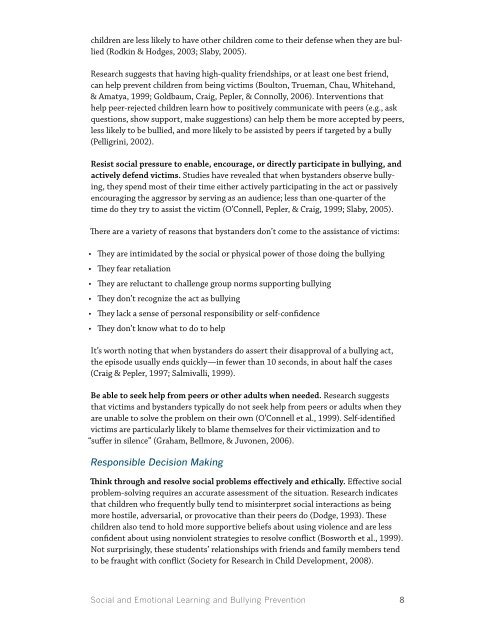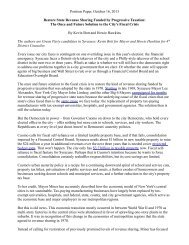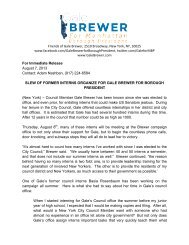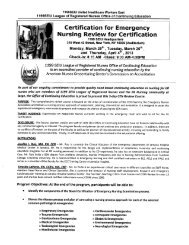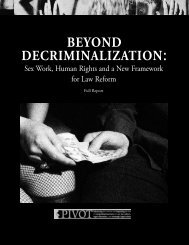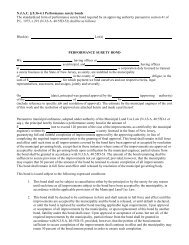SEL-and-Bullying-Prevention
SEL-and-Bullying-Prevention
SEL-and-Bullying-Prevention
Create successful ePaper yourself
Turn your PDF publications into a flip-book with our unique Google optimized e-Paper software.
children are less likely to have other children come to their defense when they are bullied(Rodkin & Hodges, 2003; Slaby, 2005).Research suggests that having high-quality friendships, or at least one best friend,can help prevent children from being victims (Boulton, Trueman, Chau, Whiteh<strong>and</strong>,& Amatya, 1999; Goldbaum, Craig, Pepler, & Connolly, 2006). Interventions thathelp peer-rejected children learn how to positively communicate with peers (e.g., askquestions, show support, make suggestions) can help them be more accepted by peers,less likely to be bullied, <strong>and</strong> more likely to be assisted by peers if targeted by a bully(Pelligrini, 2002).Resist social pressure to enable, encourage, or directly participate in bullying, <strong>and</strong>actively defend victims. Studies have revealed that when byst<strong>and</strong>ers observe bullying,they spend most of their time either actively participating in the act or passivelyencouraging the aggressor by serving as an audience; less than one-quarter of thetime do they try to assist the victim (O’Connell, Pepler, & Craig, 1999; Slaby, 2005).There are a variety of reasons that byst<strong>and</strong>ers don’t come to the assistance of victims:• They are intimidated by the social or physical power of those doing the bullying• They fear retaliation• They are reluctant to challenge group norms supporting bullying• They don’t recognize the act as bullying• They lack a sense of personal responsibility or self-confidence• They don’t know what to do to helpIt’s worth noting that when byst<strong>and</strong>ers do assert their disapproval of a bullying act,the episode usually ends quickly—in fewer than 10 seconds, in about half the cases(Craig & Pepler, 1997; Salmivalli, 1999).Be able to seek help from peers or other adults when needed. Research suggeststhat victims <strong>and</strong> byst<strong>and</strong>ers typically do not seek help from peers or adults when theyare unable to solve the problem on their own (O’Connell et al., 1999). Self-identifiedvictims are particularly likely to blame themselves for their victimization <strong>and</strong> to“suffer in silence” (Graham, Bellmore, & Juvonen, 2006).Responsible Decision MakingThink through <strong>and</strong> resolve social problems effectively <strong>and</strong> ethically. Effective socialproblem-solving requires an accurate assessment of the situation. Research indicatesthat children who frequently bully tend to misinterpret social interactions as beingmore hostile, adversarial, or provocative than their peers do (Dodge, 1993). Thesechildren also tend to hold more supportive beliefs about using violence <strong>and</strong> are lessconfident about using nonviolent strategies to resolve conflict (Bosworth et al., 1999).Not surprisingly, these students’ relationships with friends <strong>and</strong> family members tendto be fraught with conflict (Society for Research in Child Development, 2008).Social <strong>and</strong> Emotional Learning <strong>and</strong> <strong>Bullying</strong> <strong>Prevention</strong>8


